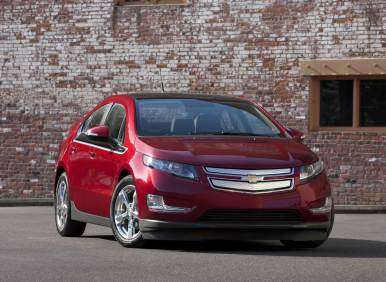Recent Articles
Popular Makes
Body Types
2012 Chevrolet Volt Road Test and Review
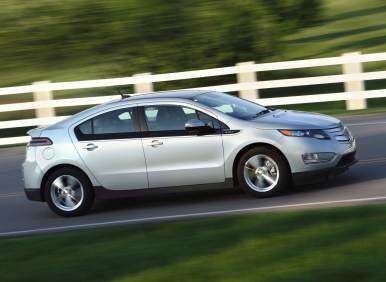
The 2012 Chevrolet Volt is GM's great experiment: a halo car that draws its prestige not from gaudy performance stats but rather from a unique electric drivetrain that includes a range-extending gasoline generator. The Chevrolet Volt effectively provides buyers with a battery-powered option that avoids the anxiety associated with running out of juice miles from the nearest charging center, transforming the concept of an electric car from novelty to responsible commuter car choice. Along the way Chevrolet has also managed to ensure that the Volt has been engineered to provide the kind of driving experience that almost completely disguises the vehicle's alternative power source, making it the world's first mainstream plug-in electric car.
2012 Chevrolet Volt: Competition
It would be easy to lump the 2012 Chevrolet Volt in with the other pretenders to the electric car throne but the reality is a bit more complicated than that. Although automobiles like the Nissan LEAF are often compared against the Volt, the fact that the Japanese EV relies on battery power alone with no backup internal combustion generator makes it a completely different animal when examining its practicality for anything other than urban commuting. The new Toyota Prius Plug-in Hybrid features a similar combination of battery and gasoline energy usage, but its 15 mile electric range is significantly shorter than that of the Volt.
It is safe to say that there aren't really any other vehicles currently out there that fall into the Volt's class. That doesn't mean, however, that the Chevrolet is not cross-shopped against a number of different eco-friendly hybrids, efficient diesel automobiles and lower-range electrics by buyers looking for transportation that fits their own personal driving profile.
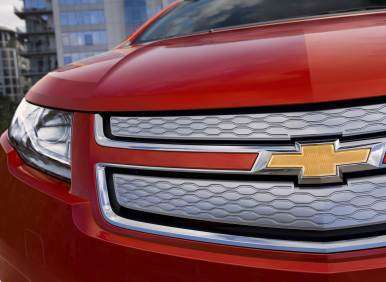
2012 Chevrolet Volt: Pricing and Trim Levels
The 2012 Chevrolet Volt comes in a single, well-equipped trim level that starts at an MSRP of $39,995. The Volt can be upgraded via a short list of stand-alone options and packages, mostly oriented towards improving additional comfort or installing a few technology-oriented goodies to play with.
The Chevrolet Volt that we were given for our week-long road test came with almost every additional feature available, which pushed the hatchback's price up to $42,485. A number of tax incentives are available at the federal level in order to help reduce the cost of purchasing a Volt, so potential buyers should check with Chevrolet dealerships in order to find out exactly what kind of a discount can be had on the electric car.
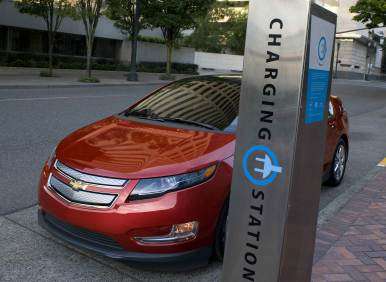
2012 Chevrolet Volt: Exterior
The 2012 Chevrolet Volt doesn't really resemble anything else in the company's stable, a nod to the extensive work put into ensuring that the Volt's drag coefficient (0.29) is low enough to minimize wind resistance and improve battery range at highway speeds. The Volt also features a rear hatch opening that combines with a stubby trunk to give it an unusual profile, one which doesn't bring to mind any other automobile on the road today. 17-inch wheels nicely buck the trend of stuffing the largest possible rubber underneath a modern vehicle (undoubtedly due to weight concerns), and the vehicle's front fascia is much sportier than one would expect from a mass market electric car.
The Chevrolet Volt is not particularly attractive, but it's certainly not ugly - think of it as the endearingly awkward friend who was blessed with a number of pleasing features that just don't quite come together to create a masterpiece. Perhaps the best word that can be used to describe the Volt's styling is unique, which fits in well with what Chevrolet has tried to accomplish when building the automobile's image through advertising and promotion.
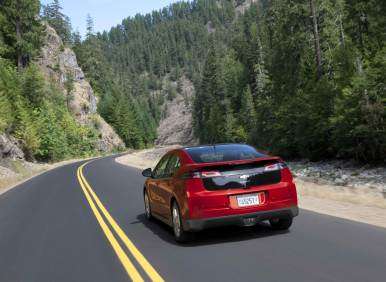
2012 Chevrolet Volt: Interior
The 2012 Chevrolet Volt's passenger compartment is far more polarizing than its exterior appearance. The vehicle's dash is dominated by two LCD displays - one positioned immediately in front of the driver and the other located at the top of a prominent center stack that on our test car was finished in an iPod-white plastic that matched the vehicle's door trim. Arranged across the width of this semi-waterfall stack (which offers a hollow cavity behind it similar to what is found in vehicles such as the Volvo V50) are touch controls that handle that majority of the vehicle's climate, entertainment and information features.
Some passengers were quite taken with the ultra-white plastic, while others felt that it cheapened an otherwise upscale-appearing cabin. The decision to incorporate touch-style buttons was definitely informed by the pseudo-futuristic vibe but they were not always easy to use with gloved hands, nor did they provide the kind of feedback when pushed that indicated that the command had been received by the Volt's computer brain. One of the buttons that featured a more traditional tactile response was the one emblazoned with a leaf icon, found on the left side of the stack. This control was linked to the centrally-mounted LCD panel where it allowed drivers to cycle through different screens displaying information about the vehicle's charge status, the percentage of the driving on the current charge that has been powered by gasoline versus electricity, how much impact driving style and the vehicle's climate control settings are having on battery drain and a real-time graphic demonstrating the flow of power from the Volt's battery to the wheels, the wheels to the battery (via regenerative braking) or the gasoline engine to the battery.
The screen found directly in front of the driver displays the Volt's speed, the number of miles left on the current battery charge, whether the automobile is currently running on gas or electricity as well as trip information and navigation instructions. On the right side of the screen sites a small green ball that floats up or down depending on whether the Volt is being accelerated rapidly or being subjected to heavy braking - neither of which are conducive to wringing optimal mileage from the hatchback's battery. The ball also turns from green to yellow when driver behavior has been judged to deviate from the eco-norm, but it isn't all that difficult to rein in the lead foot and keep the indicator happily in the middle under normal driving conditions.
Our tester's leather seats were quite comfortable, although the lack of power adjustments (surely another weight-saving strategy) was hard to get used to given the high-end feel of the rest of the Chevrolet Volt's interior. The compact car only seats four passengers, with a 2+2 design necessitated by the T-shaped battery that runs underneath the chassis along the centerline of the car and expands directly behind the rear seats. Legroom and shoulder room are good throughout the hatchback as a result, and the novelty of the vehicle's four-seat design combined with a lack of separation between the passenger and cargo compartments drives home the fact that the Volt is something different.
It's also worth noting that the optional Bose 'Energy Efficient' sound system installed in our Volt was by far the best stock stereo many of us had ever heard in a GM product. The same can't be said for the heating system, however. In Montreal's bitterly cold January weather it had difficulty maintaining a comfortable cabin temperature, as well as a hard time keeping the windshield and side windows fog-free. The vehicle's three-stage heated seats helped, but they didn't completely make up for the climate control coming up short.
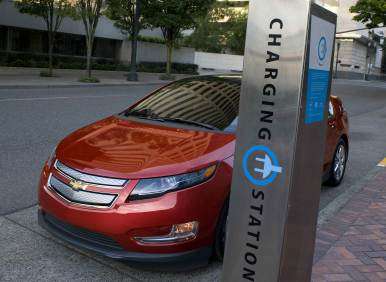
2012 Chevrolet Volt: Powertrain and Fuel Economy
The 2012 Chevrolet Volt is motivated by a 149 horsepower electric motor that also churns out a respectable 273 lb-ft of torque. Backing up the Volt's battery-powered drivetrain is a 1.4-liter, four-cylinder engine that steps in once the vehicle's charge has been depleted - or in certain other situations that we will outline below. The vehicle doesn't feature a traditional automatic transmission.
Chevrolet lists the Volt's battery range as between 25 and 50 miles, depending on temperature, driving conditions and how hard the person behind the wheel hammers the throttle. An additional 350 miles are available from a fuel tank of fuel. With the gasoline engine running, the EPA estimates the Volt's fuel mileage at 35-mpg city and 40-mpg highway, and the vehicle gains an overall 95-mpge rating. During the course of the week we drove the car we used just under three gallons of fuel in combined city / highway traffic, for an average of 54-mpg.
Charging the 2012 Chevrolet Volt's battery about 10 hours using a standard 120-volt outlet and the vehicle's included cable, or just four hours using a 220-volt charger available from GM. We were able to get very close to maximum range from the car after just a seven-hour charge.
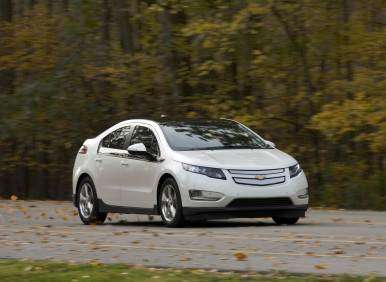
2012 Chevrolet Volt: Driving Impressions
Perhaps the greatest compliment that can be paid to the 2012 Chevrolet Volt is that it drives exactly like a regular gasoline-powered automobile in almost all situations. Except for the unsettling-at-first silence of the vehicle's drivetrain and the instant-on character of the electric motor's torque delivery, when the Volt is operating in electric mode there is nothing to give away the fact that it represents a technological leap forward over traditional automotive design.
The Chevrolet Volt's e-motor does an excellent job of providing enough power for passing or tackling steep hills - especially when Sport mode is selected, which sharpens throttle response and dramatically transforms the character of the hatchback off of the line. A 'Mountain' mode is also offered, which is designed to help the Volt traverse hilly stretches of road. The vehicle's suspension system was able to balance comfort with agility, even when hammered by the broken asphalt that is Montreal's gift to alignment shops everywhere, and the automobile felt stable and composed at highway speeds. If there was one area where the Volt's façade of normalcy was pierced it was in the steering department, where an unusual return-to-center feel betrays the automobile's electric power assist.
The Volt's gasoline motor is obvious to the driver as soon as it kicks on, introducing a gentle vibration and noise that stands in stark contrast to the quiet of the cabin under electric power. The hatchback's driving dynamics did not seem to be affected by the internal combustion engine running, which happened fairly often during our winter testing. In fact, it was unusual to get through a single charge without having the motor kick on at least once due to 'temperature,' as the driver's display informed us. The Chevrolet Volt makes use of the gasoline engine to help heat up the passenger compartment more quickly should conditions warrant it, and this happened again and again over the course of the week. The cold and snowy weather (and resulting increased drain on the battery from the heating system, spinning tires, etc) also restricted our battery range to just 25 miles - long enough for most trips, and something we were warned about by GM, but still a disappointment each time the gasoline engine kicked on and interrupted our pure electric bliss.
One last item worth mention about the 2012 Chevrolet Volt is its traction control system. Should the vehicle's wheels spin too quickly power is cut entirely, paralyzing the automobile in whatever position it has become stuck in. This occurred several times on an inclined driveway and once when parking on a snowy downtown street. Normally, turning off the vehicle's traction control system is enough to allow a skilled driver to steer out of the slippery situation, but locating the button to do this proved difficult. Eventually it was found in the overhead console, an unusual spot for such an important vehicle system control.
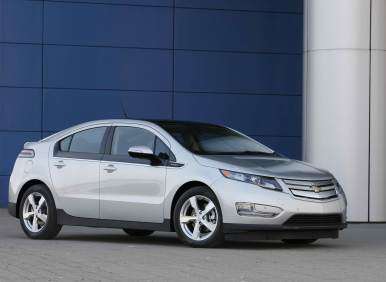
2012 Chevrolet Volt: Safety
The 2012 Chevrolet Volt features the OnStar telematics system, which offers automatic crash response, the ability to contact emergency services and other useful features such as stolen vehicle tracking. It also comes with forward and knee airbags for driver and passenger, side curtain airbags and the already-mentioned stability and traction control system. The Volt has consistently scored well in both National Highway Traffic Safety Administration and Insurance Institute for Highway Safety tests, and four-wheel anti-lock disc brakes are standard with optional safety gear including rear parking assistance and a rearview camera.
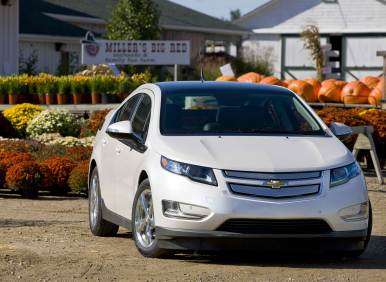
2012 Chevrolet Volt: Final Thoughts
Slipping behind the wheel of the 2012 Chevrolet Volt feels like stepping out of a time machine into a future where electric cars are a daily fact of life, not the automotive equivalent of a dog walking on its hind legs. This is because the Volt just seems so normal in daily use, offering everything that a compact car buyer could want without asking for any undue sacrifices.
Yes, it would be great to have a longer battery range in the winter - and better heating - but other than that the Volt is a comfortable commuter that is even reasonably fun to drive when put into Sport mode. If this is the vehicle that will be the leading edge of the electric car movement, then it would seem that the future of alternative energy in the automotive world is heading in the right direction - unless you live in a very cold climate, of course.
What We Like About The 2012 Chevrolet Volt:
• It drives like any other car
• Instant-on torque is quite rewarding with the right foot down
• The silence of battery-powered driving is unexpectedly intoxicating
We're Not So Hot On:
• Limited low-temperature battery range
• Weak heating system
